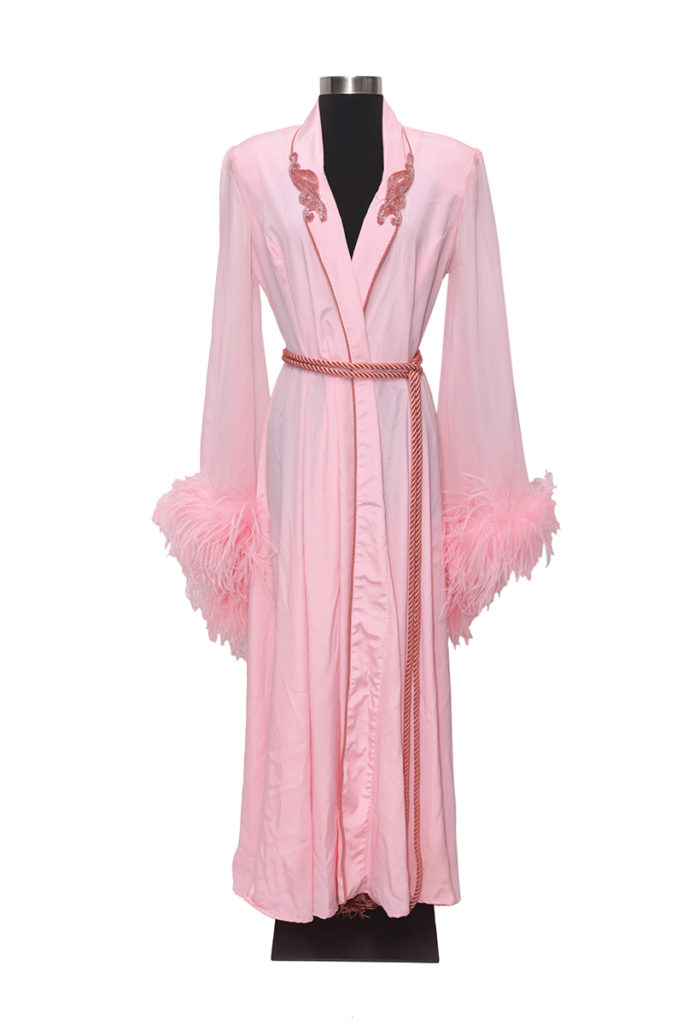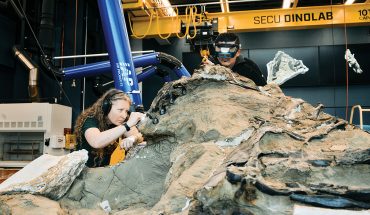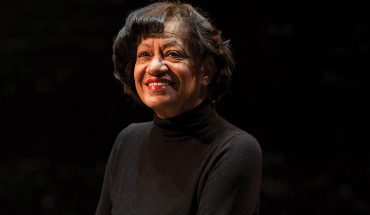A new exhibit at the North Carolina Museum of History on loan from the Grammy Museum highlights the trailblazing women of country music.
by Hampton Williams Hofer

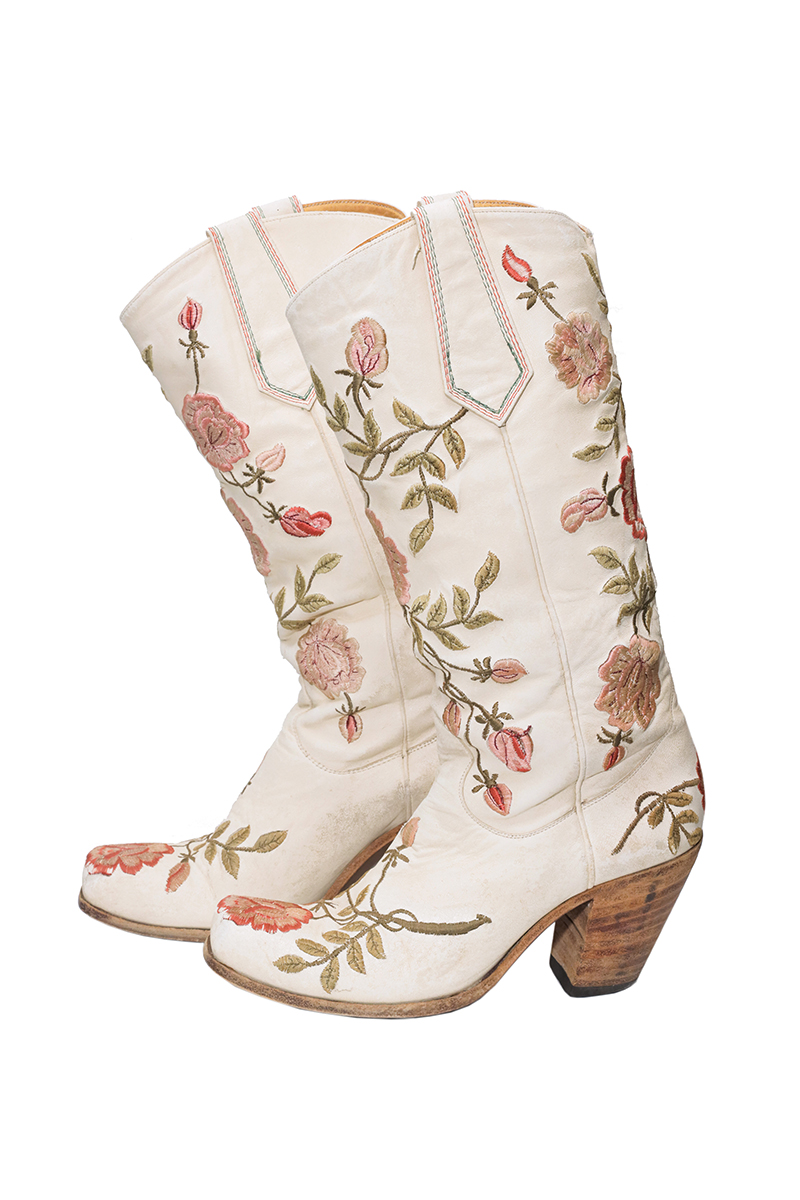
Country music’s not all about blue jeans, flannel and big belt buckles — we’ve got Dolly Parton’s custom butterfly-inlaid Gibson banjo, Emmylou Harris’ white floral boots and Wanda Jackson’s pink-fringed blazer to prove it. Starting on Oct. 28, The Power of Women in Country Music, an exhibition on loan from the Grammy Museum in Los Angeles, will make its temporary home at the North Carolina Museum of History.
This comprehensive exhibition tells the stories of some 70 trailblazing female country artists who have left their marks on the genre over the past century. And it’ll be right at home here, where the NCMH has layered in special artifacts from several of North Carolina’s own pioneering women in country music.
The exhibition is a record of artists who paved the way for the ones to come. “I think visitors will find out amazing details about the artists they love, and also about the artists who those artists loved,” says Kelsey Goelz, associate curator at the Grammy Museum in Los Angeles. “Maybe you love Miranda Lambert, but did you know that she was inspired by Maybelle Carter’s unique way of strumming the guitar?” Female performers have also used their platforms to bring social issues to the forefront: Dolly Parton’s singing about working nine to five sounded lighthearted and catchy, but offered progressive lyrics for the time; Mickey Guyton’s 2020 hit “Black Like Me” confronted racism in a push for more diversity in country music.
With photos, handwritten lyrics and instruments, The Power of Women in Country Music celebrates not only the legendary groundbreakers, but also current stars like Maren Morris and Brandi Carlile. Every item in the collection is on loan, and many of the women who own them have visited the exhibit. “It comes alive when they stop by,” Goelz says of the stars. “Many have cried to see their artifacts on display.”
One thing you’ll see is Shania Twain’s unforgettable ensemble from the music video for her 1999 hit, “Man! I Feel Like a Woman!” The top hat, long black coat, white shirt and tie shown on a mannequin represent a mighty moment for femininity. “Shania’s outfit is iconic — it symbolizes how unapologetic Shania is with who she is and her power as a woman,” says Goelz. “It’s really what the exhibit is all about.”
There’s also the white dress that LeAnn Rimes wore to the Grammys when, at just 14, she became the youngest artist, and the first country artist, to win for Best New Artist. Wanda Jackson is considered one of the first female country stars; she toured with Elvis in the 1950s. Her acoustic guitar, which came from a female-owned guitar company, now sits on display, pink and proud.
There’s also Taylor Swift’s Deering banjo from her 2010 music video for “Mean,” Faith Hill’s 2002 Grammy for Best Female Country Vocal Performance and Reba McEntire’s pink dressing gown from the music video for her 1993 hit “Does He Love You.”
Featured in the exhibit is “Aunt” Samantha Bumgarner, from the Dillsboro area, who is considered one of the first women to ever record a country song, in 1924. The museum also curated artifacts from North Carolina musicians like Myrtle Cooper Wiseman from Boone, Donna Fargo from Mount Airy, Rhiannon Giddens from Greensboro and Kasey Tyndall from Greenville.
Durham country star Rissi Palmer contributed the microphone she used to record her first episode of Color Me Country, a radio show focused on the underrepresented stories in the genre. “It’s an honor to be included in the company of so many women I admire,” says Palmer. “My microphone shows that the story of country music is way more diverse and complex than meets the eye. There is a long line of women of color who have made it possible for me to stand here today and I’m representing them as well as those that come after.”
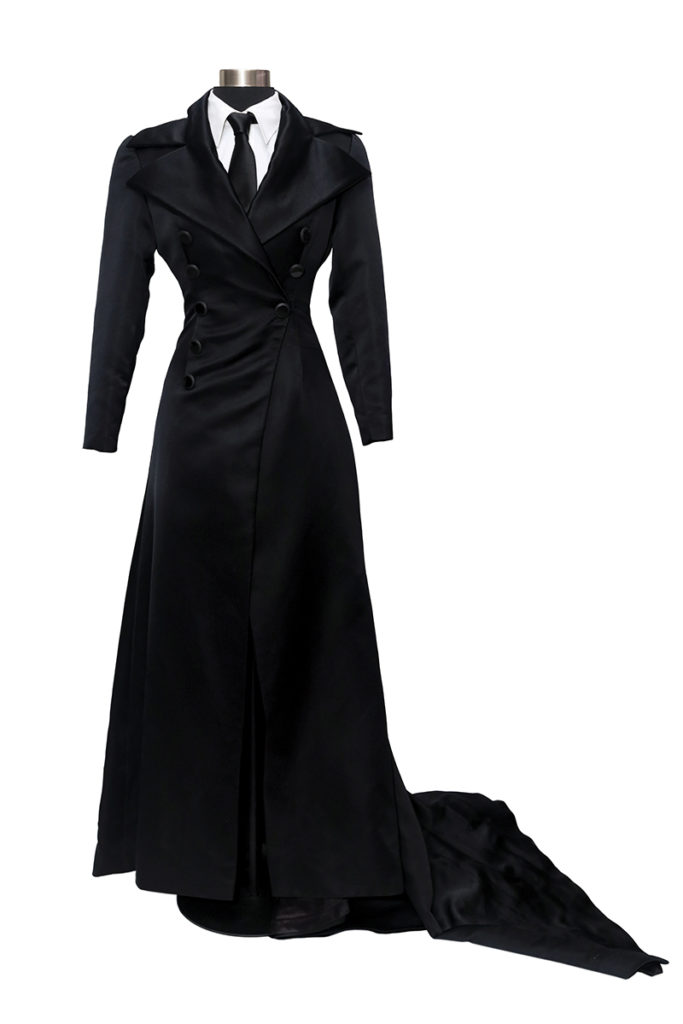
Female artists make up only 10 percent of country radio airplay, but won more than half of the Grammys Country Music Albums of the Year over the last 20 years. “We wanted to shed a light on how important women are to country music,” Goelz says. “They are the ones moving it forward.”
Katie Edwards, the curator of popular culture at the NCMH, grew up listening to her grandmother’s cassette tapes of Dolly Parton, who’s still one of her idols. For Edwards, the exhibit’s impending arrival is a thrill. “There are so many great artifacts in this exhibition that helped shape the narrative of women in country music,” says Edwards. “For years, women have received less airtime on country music radio stations, fewer opportunities for touring and just have been underrepresented.”
Palmer is one of the artists who will be featured in the NCMH’s musical accompaniment to the exhibition: a concert series called Southern Songbirds, which will take place in the museum’s Daniels Auditorium, emceed by legendary North Carolina singer-songwriter Jim Lauderdale. “I think a lot of people have a particular image of what country music performers look like or where they come from. This series further breaks the mold that’s being broken down daily in the industry,” says Kara Leinfelder, creative director at the NCMH.
“We are incredibly lucky, from a regional standpoint, to live in the part of the country where we can say this is ours, because it is.” She spearheaded the Southern Songbirds series, which will welcome Charly Lowry, Caitlin Cary, H.C. McEntire and Tift Merritt. “All these artists have a strong sense of consciousness in their art,” says Palmer, who is also performing. “I’m proud to say that they — and I — are from North Carolina.”
Growing up in the foothills of the Appalachian Mountains, Leinfelder was surrounded by roots music and country, most often performed by men. “When female artists started to take center stage and dominate the industry, I was thrilled! It was empowering,” says Leinfelder. “Now, in 2022, it’s more than that. Country music really branches across so many communities, and North Carolina has a deep canon of artists contributing to where it’s been — and where it’s going.”
This article originally appeared in the October 2022 issue of WALTER Magazine

